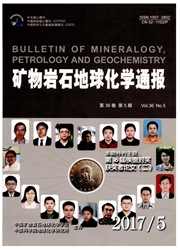

 中文摘要:
中文摘要:
掌握青藏高原东缘气候变化历史对认识区域乃至全球气候动力成因有重要意义。本文基于我们近年来在青藏高原东缘获取的湖泊记录,并汇总他人研究成果,探讨了高原东缘近2000年气候变化历史。我们的工作表明青藏高原东缘北部(N-ETP)和南部(S-ETP)近2000年水文气候存在显著的区域差异。N-ETP 地区中世纪总体温暖湿润,小冰期寒冷干燥,近100-200年温暖湿润,表现为“暖湿-冷干”气候模式;而S-ETP地区中世纪温暖干旱,小冰期寒冷湿润,近100-200年温暖干旱,表现为“冷湿-暖干”气候模式。对比分析表明,N-ETP地区气候模式与东亚夏季风广泛区域气候模式相似;而S-ETP地区气候模式与多数印度夏季风地区气候模式相似。我们怀疑这样大尺度的水文气候差异可能与不同区域大气环流差异以及赤道太平洋-印度洋海表面温度变化及其引起的大气环流的强度及位置的变化有关。
 英文摘要:
英文摘要:
Knowledge of the climatic changes during the past 2,000 years along the eastern margin of the Tibetan Plateau (ETP) is critical in understanding both regional and global climatic dynamics. Here we study climatic changes along the ETP transect on the basis of the limnological records and evidences from other studies. Our results showed a striking hydroclimatic contrast between the north ETP area (N-ETP) and the south ETP area (S-ETP). The climate in the N-ETP area shows a "warm wet-cold dry" pattern, e.g., warm-wet medieval period, cold-dry Little Ice Age (LIA), and warm-wet modern/recent epoch. On the other hand, the climate in the S-ETP area follows a "warm dry-cold wet" pattern, e.g., warm-dry medieval period, cold-wet LIA, and warm-dry modern/recent epoch. Comparisons showed that the climatic pattern in the N-ETP area is similar to that in the East Asian summer monsoon area; while the climatic pattern in the S-ETP area is similar to that in the most part of the Indian summer monsoon area. Our hypotheses is that the large scale hydroclimatic contrasts might be related to changes in both intensities and locations of different atmospheric circulations, which result from changes of surface temperatures of tropical Indian-Pacific oceans.
 同期刊论文项目
同期刊论文项目
 同项目期刊论文
同项目期刊论文
 期刊信息
期刊信息
